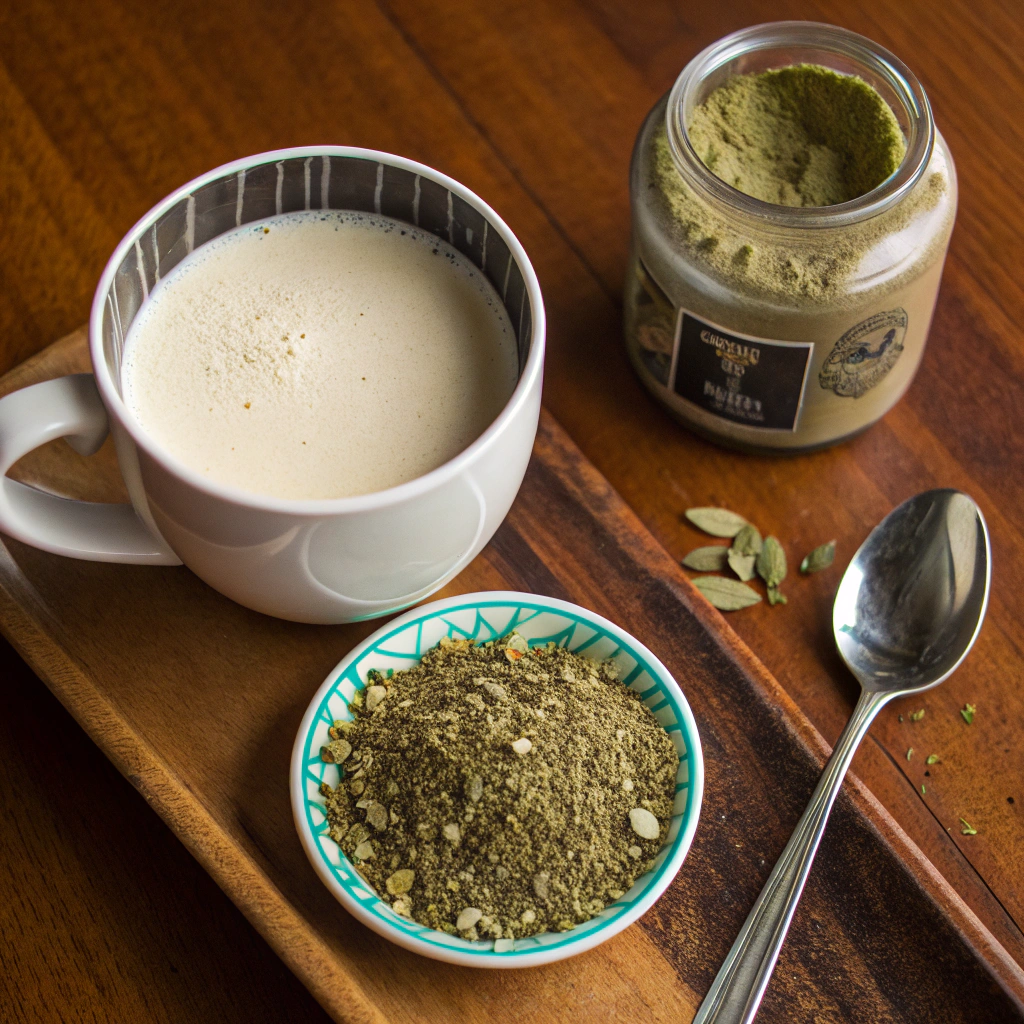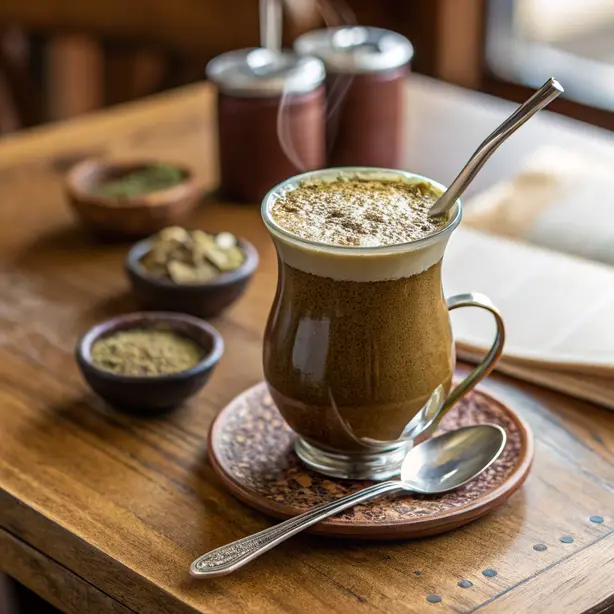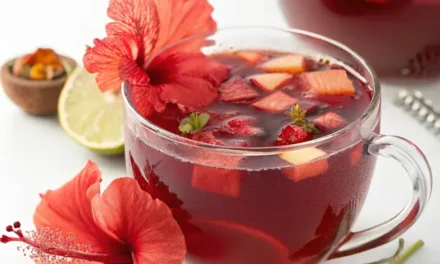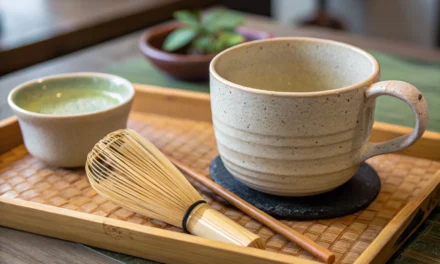Introduction: A Creamy Boost from the Rainforest
Did you know that the yerba maté latte, a rich and energizing tea latte, hails from the ancient cultures of South America and combines the invigorating power of mate with the creamy smoothness of a latte? If you’re seeking a better lift than your regular morning coffee, this traditional South American tea might just be your new favorite brew. With earthy flavors intensified by creamy textures, this beverage is both a delight to your taste buds and a rejuvenating start to your day.
Ingredient List
Creating the perfect yerba maté latte requires just a few simple ingredients, which can also be substituted to suit your preference while maintaining the essence of this rainforest potion.
- 1 tablespoon yerba maté leaves
- 1 cup hot water (not boiling)
- 1/2 cup milk (dairy or non-dairy like almond, oat, or coconut milk)
- 1 teaspoon honey or maple syrup (optional, adjust to taste)
- A pinch of cinnamon or nutmeg for garnish

The nutty aroma of yerba maté leaves combined with the creamy milk produces a delightful and distinctive drink that transports you to the vibrant heart of the South American rainforest.
Time
Preparation is quick and hassle-free:
- Preparation Time: 6 minutes
- Total Time: 10 minutes
This swift assembly means you enjoy your yerba maté latte a full 20% quicker than brewing a traditional cup of coffee.
Step-by-step instructions
Step 1: Preparing the Mate
Fill your favorite tea infuser or French press with yerba maté leaves. Add hot water just before boiling, as boiling water can scorch the leaves, affecting the flavor.
Step 2: Brewing Time
Allow the leaves to steep for about 3-5 minutes, depending on how strong you like your tea. While waiting, relish the rising herbal scent which prepares your senses for the upcoming burst of energy.
Step 3: Frothing the Milk
Warm your choice of milk to just below boiling. Froth it using a handheld milk frother or simply whisk vigorously until foamy. This step adds the quintessential creaminess to your latte.
Step 4: Combining the Elements
Pour the steeped yerba mate into a cup, then gently add the frothed milk. Sweeten with honey or maple syrup if desired. Dust with a pinch of cinnamon or nutmeg for added warmth and complexity.
Nutritional Information
Packed with antioxidants, vitamins, and minerals like caffeine, the yerba maté latte offers:
- Calories: Approximately 80 (varies with milk and sweetener choice)
- Caffeine: Around 30 mg per serving, providing a gentle energy boost without the jitters commonly associated with coffee.
Common Mistakes to Avoid
- Using Boiling Water: This can damage the delicate flavor of yerba maté. Use hot, not boiling, water.
- Oversteeping: Exceeding the steeping time can lead to a bitter taste. Stick to the recommended 3-5 minutes.
- Skimping on Frothing: A good froth is essential for a creamy texture. Be patient with your foaming process.
Recipe Storage Tips
Your luscious yerba maté latte is best enjoyed fresh, but if you need to prepare it ahead of time:
- Keep it refrigerated and consume within 24 hours.
- Reheat gently to preserve its delicate flavor profile and creamy consistency.
Conclusion
The yerba maté latte is more than just a drink; it’s an experience that marries ancient tradition with modern culinary pleasure. Try this rich, steeped delight for a morning boost or an afternoon lift. If you enjoyed this, why not dive into other revitalizing tea experiences? Share your version and comments below. Your insights inspire us and others in our tea-loving community!
FAQ
Q: Can I make a yerba maté latte with cold brew?
A: Absolutely! Use a cold brewing process over 24 hours and enjoy it chilled for a refreshing alternative.
Q: Is yerba maté safe during pregnancy?
A: While yerba maté is generally safe, it’s best to consult with a healthcare provider due to its caffeine content.
Q: Does yerba maté have more caffeine than coffee?
A: Yerba maté contains less caffeine than coffee, offering an energy boost without the crash.
Explore the journey of South American tea by South American tea or See More about the health impacts and cultural significance.






